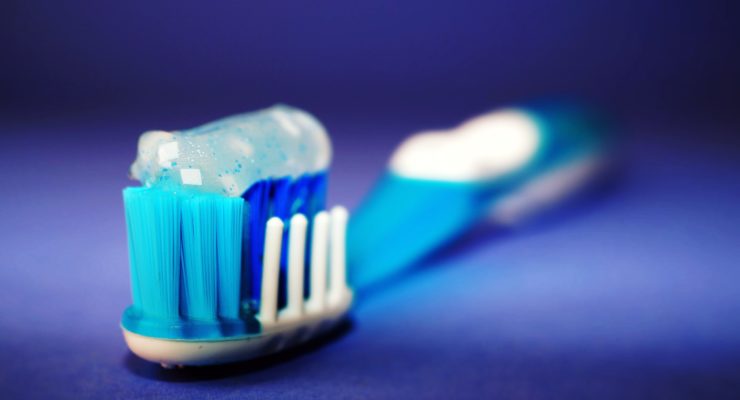Take Care of Teeth in SEND Children
All of the advise from the page “Take Care of Children’s Teeth” applies to children with SEND, but you may find that some of the guidance is a challenge to follow in your situation. This page will outline some tools and tips that might help you to overcome these barriers. If you really are struggling though, please speak to a trusted professional who will support you and help you to find a way through.
This link will take you to “Take Care of Children’s Teeth”
The ToothPASTE website provides advice and support for families of young autistic children to care for their teeth. Created with families, professionals and researchers. This link will take you to ToothPASTE.
My child puts up a fight when I try to brush their teeth, should I power on, or just leave it?
Many parents are concerned with causing stress and anxiety for their child during toothbrushing, and putting them off altogether. Toothbrushing is really important to remove debris and plaque to avoid tartar build up, enamel erosion, gum disease and tooth decay. If left untreated, these diseases can lead to serious health conditions such as pneumonia and diabetes.
So, if your child is putting up a fight, consider some of these ways to get the brushing done:
Incentives – sticker charts or prizes – avoid sugary treats or those which will cost you lots of money in the long run; suggestions could be “An extra episode of your favourite TV show” “Five minutes in the park at the weekend for every time we brush for two minutes” (equating to an hour over the week), or collect stickers towards a wanted item/activity.
Play – make it a game! Some toothbrushes come with apps that turn toothbrushing into a game, but you can do this at home too with a bit of imagination. Perhaps you could play dentists, or pretend the brush is a character like an alien exploring the mouth for the first time, or a lion hunting for food… it could be as silly as you and your child’s creativity will let it.
Non-Foaming Toothpaste- There are toothpastes on the market (try online) which are flavourless and non-foaming. Foam plays a role in getting the mouth clean as it forces debris out from between your teeth, but for some children this sensation is just too much to cope with. Try these pastes and see if you get on a bit better. If you’re shopping around for different flavours, make sure the paste has 1450ppm fluoride written on the side of the box, and avoid whitening toothpastes, as these are abrasive and can cause damage to tooth enamel.
Go Paste-Free – speak to your dentist if you have one. If your dentist agrees that in your child’s case, it is better to brush with water or a dry brush than not brush at all, start there – get your child used to the feeling of brushing their teeth, and into the habit of doing it twice a day. You can work up to paste later if it feels right.
Adapted toothbrushes – three headed and curved brushes clean three surfaces at a time. These brushes are great for doing the job in a shorter space of time – it is not as thorough but is a good compromise. These are available online.
Use a prop – to hold the jaw open. Some children struggle to keep their mouth open, all you need is a space big enough to manoeuvre the toothbrush. Take two cheap toothbrushes, push their bristles together and tape up the handles. This works as a prop to keep the teeth from clamping on to the brush you are trying to clean with. Other props are available on the market, but take care with the finger toppers if your child is reluctant or has a strong bite!
Handles – handles that make toothbrushes chunkier or floss less fiddly are available. If your child is trying but struggling to use these tools consider investing in these.
Massage – can relax the jaw and make toothbrushing more comfortable.
Desensitisation Procedure – if oral hypersensitivity is an issue at play, remember to use the desensitisation procedure every day. You may find at first that you don’t get to the brushing phase, but persist and be patient. If you are unfamiliar with the desensitisation procedure or can’t remember it, please find the relevant description on this page.
Above all, it is important to remember – this IS a battle worth fighting.
My child is peg fed, do I need to brush their teeth?
Yes, it is still important to brush teeth – actually more so than children who chew food. Plaque is a natural bacterial film that grows on everybody’s teeth. If it is not removed it hardens into tartar, which leads to more plaque growth. This tartar and plaque cycle can cause bacteria to be inhaled and lead to aspiration pneumonia – a serious bacterial infection in the lungs.
Saliva helps keep plaque levels down between brushes, but many medications cause dry mouth, which means the natural defence system isn’t as effective.
Reflux and vomiting are common side effects for those who are peg fed. Stomach acid is highly corrosive to teeth, so should be removed first with water, then once the enamel has had chance to harden (30-60 minutes after), the teeth should be brushed with fluoride toothpaste to help teeth stay strong.
It is advised that children who are peg fed should brush their teeth three times a day, to keep teeth strong and clean.



